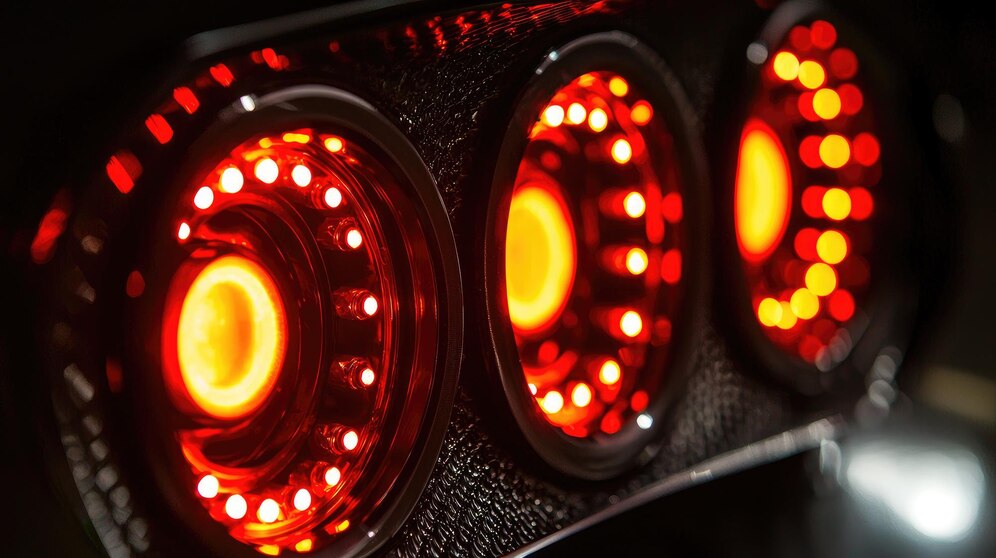1992 corvette remover tail lights for led load resistor Upgrading your car’s lighting system can dramatically enhance both the aesthetics and functionality of your vehicle. If you’re the proud owner of a 1992 Corvette and are considering upgrading to LED tail lights, you might come across a common issue: the need for a load resistor. In this comprehensive guide, we’ll explore everything you need to know about the 1992 Corvette remover tail lights for LED load resistors, why they’re necessary, how to install them, and what benefits they provide. We’ll also address common questions to help you make an informed decision.
Why Upgrade to LED Tail Lights for a 1992 Corvette?
LED tail lights are a popular upgrade among car enthusiasts for a variety of reasons:
- Increased Brightness: LED lights are significantly brighter than traditional incandescent bulbs, improving visibility for other drivers, especially at night.
- Longer Lifespan: LEDs last longer, meaning fewer replacements and lower maintenance costs.
- Energy Efficiency: LED lights consume less power, which can help save your car’s battery and electrical system.
- Modern Look: LED tail lights provide a sleek, modern aesthetic, elevating the look of your 1992 Corvette.
- Faster Response Time: LEDs light up instantly, which can help reduce the reaction time of other drivers when braking.
While upgrading to LED tail lights has numerous benefits, the process may not be as straightforward as simply swapping out bulbs. In many cases, a load resistor is required to ensure proper functionality.
What is a LED Load Resistor?
A load resistor is an electronic component used to simulate the resistance of incandescent bulbs. LEDs, due to their low power consumption, don’t generate enough resistance, which can cause issues with the car’s electrical system. Specifically, without a resistor, the turn signals and tail lights may blink faster than usual or fail to light up properly.
In older cars like the 1992 Corvette, the vehicle’s wiring and electrical system were designed for incandescent bulbs. The addition of LED lights can cause the system to interpret the reduced power draw as a bulb failure. This results in a faster blink rate or no lighting at all. The LED load resistor fixes this issue by adding resistance, helping the vehicle’s system recognize the new LED lights and function properly.
Why Do You Need a Load Resistor for Your 1992 Corvette?
When upgrading your 1992 Corvette’s tail lights to LED, the load resistor ensures compatibility with the vehicle’s electrical system. Without it, your tail lights may experience one or more of the following issues:
- Hyperflashing: This occurs when your turn signal blinks too fast due to the lower resistance of LED lights.
- Non-functioning Lights: In some cases, the LEDs won’t turn on at all because the electrical system isn’t detecting them as valid.
- Faulty Warning Lights: Your dashboard may display a bulb-out warning due to improper signal reading from the LED lights.
The 1992 Corvette remover tail lights for LED load resistor are specifically designed to address these issues, allowing your new LED tail lights to function just like the original bulbs.
How to Install LED Tail Lights and Load Resistor on Your 1992 Corvette
Installing LED tail lights and a load resistor on your 1992 Corvette is a manageable DIY project with the right tools and instructions. Follow this step-by-step guide to complete the installation.
Step 1: Gather the Necessary Tools and Parts
Before you start, make sure you have the following tools:
- LED tail lights for the 1992 Corvette
- LED load resistors
- Screwdriver or socket wrench set
- Electrical tape or heat shrink tubing
- Wire cutters and strippers
- Soldering iron or crimp connectors
Step 2: Remove the Old Tail Lights
Begin by removing the old tail lights from your Corvette. This typically involves unscrewing the tail light assembly from the rear of the vehicle. Make sure to disconnect the power to avoid any electrical mishaps. Keep the screws and hardware in a safe place for reinstallation.
Step 3: Install the LED Tail Lights
Next, install the new LED tail lights by connecting them to the existing wiring. Match the color codes of the wires (typically red for brake lights, yellow for turn signals, and white for ground) and use crimp connectors or soldering to ensure secure connections.
Step 4: Install the Load Resistor
Now it’s time to install the LED load resistor. The resistor should be placed in line with the tail light’s wiring to simulate the load of a traditional incandescent bulb. Here’s how:
- Connect the Resistor: Connect one end of the load resistor to the positive wire of the LED tail light and the other end to the ground wire.
- Secure the Resistor: Attach the load resistor to a metal part of the car to dissipate the heat generated by the resistor. Ensure it’s away from any plastic or heat-sensitive components.
- Insulate the Resistor: Use electrical tape or heat shrink tubing to insulate the resistor and its connections, ensuring a safe and secure installation.
Step 5: Test the Tail Lights
Once the load resistor is installed, reconnect the battery and test the tail lights. Check for proper functioning of the brake lights, turn signals, and running lights. If everything works correctly, your installation is complete.
Benefits of Using a 1992 Corvette Remover Tail Lights for LED Load Resistor
Installing a 1992 Corvette remover tail lights for LED load resistor provides several benefits that ensure the optimal performance of your new LED tail lights:
- Prevents Electrical Issues: The load resistor resolves issues like hyperflashing or non-functioning LEDs.
- Increases Safety: Properly functioning tail lights ensure that other drivers can see your intentions clearly, improving safety.
- Boosts Aesthetic Appeal: Upgrading to LED tail lights gives your 1992 Corvette a more modern and stylish look.
- Saves on Maintenance: LEDs last longer than traditional bulbs, reducing the need for frequent replacements.
Conclusion
Upgrading to LED tail lights in your 1992 Corvette is an excellent way to enhance the car’s appearance, increase safety, and improve energy efficiency. However, adding a load resistor is crucial to ensure compatibility with the vehicle’s electrical system and avoid issues like hyperflashing or malfunctioning lights. By following the installation steps and understanding the role of the load resistor, you can enjoy the full benefits of your LED upgrade.
FAQs
1. Do I really need a load resistor for my 1992 Corvette LED tail lights?
Yes, you need a load resistor for your 1992 Corvette if you experience issues like hyperflashing or malfunctioning lights. The resistor ensures the electrical system reads the LED lights properly.
2. Can I install the LED tail lights and load resistor myself?
Yes, installing LED tail lights and a load resistor is a straightforward DIY task if you have basic knowledge of car wiring. Make sure to follow the instructions carefully and take necessary safety precautions.
3. Where should I place the load resistor in my Corvette?
The load resistor should be connected to the wiring of the LED tail lights, and it should be securely attached to a metal part of the car to dissipate heat effectively.
4. Can I use any load resistor for my 1992 Corvette?
It’s essential to choose a load resistor that is compatible with your Corvette’s electrical system and the LED tail lights you are installing. Make sure to buy a resistor that’s specifically designed for automotive use.
5. How do I know if my LED tail lights are working correctly after installation?
After installing the LED tail lights and load resistor, test the brake lights, turn signals, and running lights to ensure everything functions properly. If you notice any issues, recheck your connections or consult a professional.
6. Will using LED tail lights affect the performance of my Corvette?
No, LED tail lights will not affect the overall performance of your Corvette. In fact, they can improve your car’s energy efficiency and visibility. However, it’s essential to install a load resistor to avoid electrical issues.
7. How long do LED tail lights last compared to incandescent bulbs?
LED tail lights last much longer than incandescent bulbs, often lasting 25,000 to 50,000 hours compared to the 1,000-hour lifespan of traditional bulbs.






